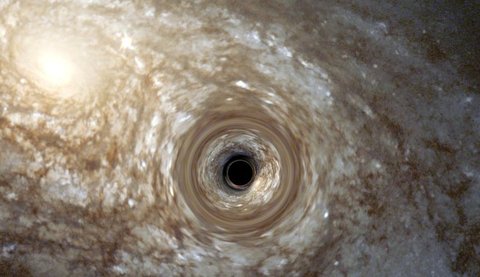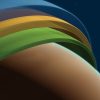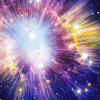“Such stunning cosmic coincidences reveal so much about nature.”
~ Leonidas Moustakas, Jet Propulsion Laboratory
The Hubble Space Telescope has revealed a never-before-seen optical alignment in space: a pair of glowing rings, one nestled inside the other like a bull’s-eye pattern. The double-ring pattern is caused by the complex bending of light from two distant galaxies strung directly behind a foreground massive galaxy, like three beads on a string. The foreground galaxy is 3 billion light-years away, the inner ring and outer ring are comprised of multiple images of two galaxies at a distance of 6 and approximately 11 billion light-years.
The discovery was made by an international team of astronomers led by Raphael Gavazzi and Tommaso Treu of the University of Californi, Santa Barbara. Treu says the odds of seeing such a special alignment are so small that they “hit the jackpot” with this discovery. “When I first saw it I said ‘wow, this is insane!’ I could not believe it!”
But this sight is more than just an incredible novelty. It’s also a very rare phenomenon that can offer insights into dark matter, dark energy, the nature of distant galaxies, and the curvature of the Universe itself. The discovery is part of the ongoing Sloan Lens Advanced Camera for Surveys (SLACS) program.
The phenomenon, called gravitational lensing, occurs when a massive galaxy in the foreground bends the light rays from a distant galaxy behind it, in much the same way as a magnifying glass would. When both galaxies are perfectly lined up, the light forms a circle, called an “Einstein ring”, around the foreground galaxy. If another more distant galaxy lies precisely on the same sightline, a second, larger ring will appear.
“Such stunning cosmic coincidences reveal so much about nature. Dark matter is not hidden to lensing,” added Leonidas Moustakas of the Jet Propulsion Laboratory in Pasaden, California, USA. “The elegance of this lens is trumped only by the secrets of nature that it reveals.”
The dark matter distribution in the foreground galaxies that is warping space to create the gravitational lens can be accurately mapped. In addition, the geometry of the two Einstein rings allowed the team to measure the mass of the middle galaxy precisely to be a value of 1 billion solar masses. The team reports that this is the first measurement of the mass of a dwarf galaxy at cosmological distance.
A sample of several dozen double rings such as this one would offer a purely independent measure of the curvature of space by gravity. This would help in determining what the majority of the Universe is made of, and the properties of dark energy.
Source: The Daily Galaxy

































Leave a Comment
You must be logged in to post a comment.